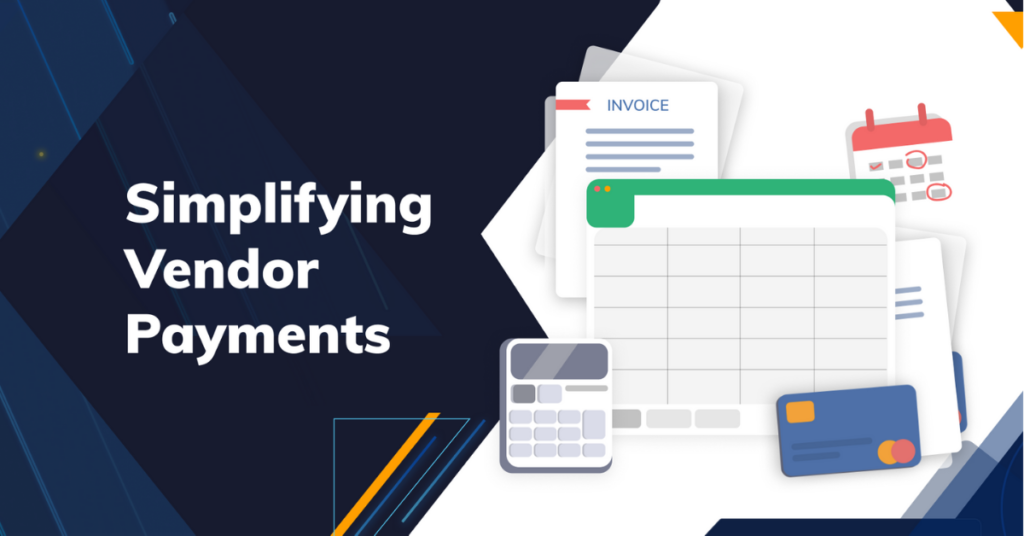If you own a business, vendor payments are something you are familiar with. It is one of the important forms of money movement among business operations. Every business utilises services from consultants and freelancers to shared office spaces and food providers.
Chances are, you have some sort of a system in place to ensure you have a foolproof way to pull all your vendor payments invoices together and track when they are due. Next, you disburse their payments in a timely manner, making sure all particulars are met.
But, chances are, your system is not as foolproof as you think.
Understanding vendor payments
Vendor payments (also called accounts payable or invoice to pay) is the process of paying vendors your business has ties with, for the goods and/or services they provide to your business.
Managing your vendor payments promptly in a systematic way, ensures a great relationship with your vendors, while guaranteeing that you don’t have liabilities for a long time. This keeps your business up and running as best can be.
Challenges with vendor payments
An average business makes at least 25 to 30 vendor payments on a monthly basis. If you are a small or medium-sized business, you might be making about the same number of payments or even more. So the question is, how do you go about making your vendor payments?
Let’s talk about the entire process.  So, what’s the problem here?
So, what’s the problem here?
We had several conversations with many businesses to understand what they find difficult while making vendor payments. And, more than half of them had similar problems.
From our conversations, we realised that most businesses
- Use spreadsheets to maintain all their vendor invoices
- Calculate and deduct TDS payments manually
- Visit bank portals to make payments and then do manual reconciliation
- Make TDS payments on the government portal
Many errors can occur here since the entire process is carried out manually. These errors can range from a simple data mismatch to a calculation error.
Manual data entry
Errors while making data entry, especially when you have a significant number of invoices coming your way from multiple vendors, is one of the easiest and most probable forms of errors you could expect.
Entering data manually into a spreadsheet is time-consuming and prone to mishaps. Or, on a bad day, you may even end up forgetting to add an invoice. A single mistake during this process could mean expensive and far-reaching complications to your business.
Compliance
Another big part of making vendor payments is compliance. You need to make sure you deduct TDS at your end for all the invoices you have to pay. Next, you have to go to the respective portal to pay the taxes.
TDS rates vary depending on the type of vendor you are dealing with. Businesses usually calculate TDS manually and pay the amount at the end of the month to the government. Businesses also opt for an accountant to do the job for them. They send over all the invoices and TDS payment details to the accountant, thereby adding another layer to the entire process.
This can further the chances of invoices getting lost, miscalculations, and delayed payments.
Snail-paced processing
Processing your vendor payments manually is extremely time-consuming, especially if you have new vendors to pay. You have to start from adding your new vendor as a beneficiary on your bank portal, wait out the cooling period, and then make a payment.
Let’s not forget about how easy it is to mess up while working with too many numbers. Calculations can go wrong, and you have to start all over again to fix your mistakes. This can possibly result in late or incorrect payments.
Complications with spreadsheets
Right now, you are perhaps working with 10 to 12 vendors and 15 to 20 invoices. But like any business, yours is sure to grow, requiring services from more vendors. Maintaining records on spreadsheets can work when you have a smaller number of vendors and invoices.
But what happens when the number becomes too many to handle? Will you continue storing and maintaining all these details on many many spreadsheets?
Security issues
A spreadsheet does not have the best security you need. If you have records of all the vendor payments you have made, the spreadsheet definitely contains a lot of sensitive information. Let’s face it; anyone can get their hands on a spreadsheet. It might get shared among many people, making fraud prevention a very challenging thing to achieve.
The motto “prevention is better than cure” really makes sense here. It’s better to ensure you don’t have to do any damage control when a fraudulent episode occurs by having adequate security.
Recommended reading: How Businesses can Simplify Payouts
How we are solving vendor payments
We at RazorpayX, understand money movement. A big step towards that goal is our solution for vendor payments.
With RazorpayX Vendor Payments, all your woes disappear.
- Without having to go through multiple platforms, you can carry out your entire process on one single platform, where everything is at your fingertips
- A smart and highly-responsive dashboard takes the place of several spreadsheets
- Our intelligent OCR reads the uploaded invoices and populates the details automatically. So, no more data-entry mishaps
- Your payments will be made on time because we send you timely reminders
- You don’t have to worry about adding new beneficiaries and waiting out the cooling period or banking hours because you can add your vendor on RazorpayX and start transacting with them immediately
- Also, payments go through INSTANTLY!
💡 You never have to worry about making TDS calculations ever again! RazorpayX Vendor Payments automatically deducts TDS from the invoices and pays the government on your behalf.
Experience error-free and seamless vendor payments like never before!



